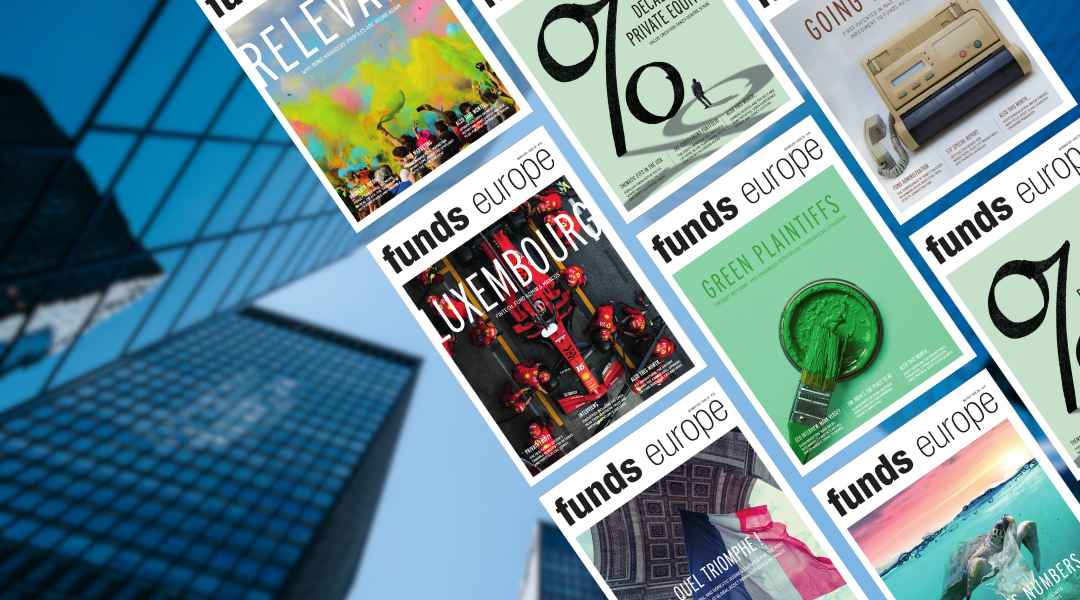 Lester Gray (Schroder IM)
Lester Gray (Schroder IM)Gopi Mirchandani (Fullerton Fund Management)
Siew Cheong Kong (Lion Global Investors)
Tony Lewis (HSBC Securities Services)
Patrick Corfe (Aberdeen Asset Management) Funds Global: How effective is the industry at distributing locally domiciled funds internationally? And how well do local funds compete with Ucits funds at a domestic level? Kong: All our funds in Lion are actually registered in Singapore, and apart from Taiwan we are unable to export our funds for distribution to anywhere else, so we have now taken a conscious decision to set up a Ucits fund range because they are widely acceptable and more flexible. It allows us to distribute to as many places as possible, not just in this region, and of course into Europe. If you look at Japan, I think they prefer Cayman to Luxembourg Ucits structures, but the fact of the matter is that Singapore-domiciled funds are seldom distributed there. Mirchandani: Japan was one of the first markets we targeted, so we looked at trying to persuade Japan to accept Singapore unit trust which is very similar to Cayman unit trust and has probably a more robust regulation but it was difficult to change the mindset. Also, while Singapore has been very generous in terms of accepting Ucits funds without having an additional layer of regulation, the converse, which is to have Singapore-regulated funds being exported to Europe or anywhere else in Asia has been really difficult. We started a Luxembourg platform last year and that enabled us at least to have a European passport. But that in itself is not sufficient. You still have to cater to the taxation that’s unique to each separate legal jurisdiction in Europe. Gray: I’ll address the second part of the question, how effectively do local funds compete with Ucits? I would say they compete very effectively. We have both a local fund range and we sell our Ucits range in most countries around Asia, including Singapore. Our leading fund in terms of size and sales in Singapore is a locally domiciled fund. The second largest fund is a Ucits fund, so we use the advantages of the respective domiciles which can co-exist perfectly well with each other. Corfe: But in an ideal world, from the point of view of cross-border marketing, you’d rather have a single jurisdiction? Gray: Sure, but if I had our Singapore equity products sitting on our Ucits platform would there be significant demand outside of Singapore? Probably not.The key is being able to achieve sufficient economies of scale in the local range which given the size of the market can be a challenge. Mirchandani: It comes down to the strategy and the type of investor as well. The more sophisticated investors are neutral on domicile/jurisdiction so if it’s a strategy which has global appeal then we don’t necessarily need a Ucits. But if you are starting from scratch and you’re not sure about whether a specific investment strategy will raise assets then from a strategic point of view you put it in Ucits. Lewis: Every manager that we deal with either has, or is planning on having, product platforms for both domestic and the Ucits funds. We have seen one manager move its entire domestic funds with us onto a Ucits platform, migrating the fund administration to HSBC’s securities services business in Luxembourg. Ucits is a universally known platform and can provide that degree of regulated comfort some investors are looking for. There has been a fair amount of discussion within the industry about Asian passporting, whether there needs to be an alternative, singularly recognised, vehicle for managers and investors in the region. The incentive for creating this is stronger for some institutions and some countries than others. I think the general consensus here says it’s a long, long way from happening given the diversity of tax environments, rules and regulations around the region, and maybe the obvious answer is to leverage the Ucits framework. Funds Global: How well are individual investors served by financial advisers and banks? How has regulation around the adviser industry changed, if at all, since the financial crisis? Gray: The majority of mutual funds distributed in Asia are distributed via banks, unlike in the UK or Australia where there’s a large and well-developed IFA channel. Of all the countries in Asia, Singapore has the most developed IFA channel but in terms of market share it is very low. Therefore, advice is not common at a mass retail level, not the true professional advice that you see in some other markets. The regulators post-crisis have put in place many more controls around client knowledge assessment, product risk disclosures, product suitability. All of this is driving distribution to a more advised model, but there’s a long way to travel down that road. Mirchandani: One of the problems is that with a front-end loads being entrenched in the system it’s going to be extremely difficult to move to an advisory model, at least on the retail front. The private banks are trying to persuade investors into the advisory model, but the mentality of the Asian high-net-worth investors is such that they like to retain control and it takes a change in mindset to want to delegate discretion on your investment portfolio to an advisor. Kong: If you ask if the banks have been providing good, unbiased advice over the past few years, the answer may not be so clear cut. Following the Lehman bonds debacle, I know that local banks have been spending quite a lot of their time reviewing sales procedures because of the regulations coming in. Sales procedures have now got to be a lot tighter, product suitability for customers is important, clients risk appetites now have to be assessed - the entire sales process is now being looked at. Have we finished looking at it? This is a continuing process and the point is that banks in Singapore are looking at it very seriously. Mirchandani: One of the trends with respect to the local banks is they are trying to move to open architecture, so essentially you will see that apart from endorsing their own funds, they do try to include an alternative best-of-breed fund. So I think that helps in terms of giving investors the choice and also allowing investors to assess which is the better fund. Kong: I can echo the point because we face that even with our affiliates. At our monthly synergy meetings, I’ve been asked frequently why our funds aren’t featured in the banks top selling funds even when we are part of the family. The reason is apart from adopting open architecture, banks are becoming independent and objective in their selection of funds and managers. They’ve got not just the regulations to deal with, internally they’ve got internal audits and review processes to make sure that they have to comply with the new regulations. Funds Global: Which do you anticipate will be the growth products over the next one to three years? Mirchandani: In the next couple of years you will see securitisation of new products which would generate income, apart from Reits [real estate investment trusts] which are now very common place. Singapore’s regime for business trusts encourages this. You are going to see a variety of businesses that can provide some form of regular income be securitised and listed on exchange. On Asia, it probably doesn’t have an adequate representation in most global indices so there might be a rethink. As Asian markets open up, I think over time you’ll see a larger representation of Asia in global indices, which means that our asset allocators across the world would now think about putting money in Asia. The liberalisation of the renminbi, especially in Hong Kong, has paved the way for more Asian local currency bond strategies. Global investors are now looking towards getting exposure to renminbi, and once you think about exposure to China we have to also consider the other Asian local currencies as well, so I think that would be really the next big growth area where expertise would be developed and more new funds would come. Over time, investors will be a little bit more sensitive to passive and actively managed products because with ETFs growing in popularity so quickly, fund managers would really have to demonstrate where their value-add is. You will see that fund managers will be more strategic in terms of coming up with new products and distinguishing themselves from just pure beta-driven products. Lewis: From an asset servicing provider perspective, we are seeing more complex products being offered here in Singapore and across the region. We are really leveraging the capability that’s been developed in other parts of the world in terms of our fund administration and our custody proposition to support our clients’ needs. Middle office outsourcing is becoming a stronger theme in Asia as fund managers want to increasingly focus on their core competency of investment management, and therefore outsource downstream functions to a service provider. This is already the case for many of our hedge fund clients but we are seeing greater interest, and incentives, for traditional investment managers to do the same. Tax incentives that have been brought in are increasing activity for private equity funds as well. Finally, the Singapore–India corridor is gaining traction. This is not only from a trade flow perspective but managers looking at India are considering Singapore as an alternative to Mauritius as a tax-efficient access point. Gray: I’m pretty much on the same page as Gopi. People are looking at income, whether that’s coming from bonds or from higher paying dividend stocks. Currency is also going to become increasingly important whether that’s offshore Renminbi opportunities or whether it’s more broadly across Asia. ©2011 funds global

 At times like these, HSBC Asset Management easily pivots towards emerging markets.
At times like these, HSBC Asset Management easily pivots towards emerging markets. A comprehensive, cost-effective, and transparent currency overlay hedging solution is crucial to mitigate FX exposure risks in the complex landscapes of Japan and China's FX markets, explains Hans Jacob Feder, PhD, global head of FX services at MUFG Investor Services.
A comprehensive, cost-effective, and transparent currency overlay hedging solution is crucial to mitigate FX exposure risks in the complex landscapes of Japan and China's FX markets, explains Hans Jacob Feder, PhD, global head of FX services at MUFG Investor Services. The world is transitioning from an era of commodity abundance to one of undersupply. Ben Ross and Tyler Rosenlicht of Cohen & Steers believe this shift may result in significant returns for commodities and resource producers over the next decade.
The world is transitioning from an era of commodity abundance to one of undersupply. Ben Ross and Tyler Rosenlicht of Cohen & Steers believe this shift may result in significant returns for commodities and resource producers over the next decade. Ross Dilkes, fixed income portfolio manager at Wellington Management, examines the opportunities and risks for bond investors presented by the region’s decarbonisation agenda.
Ross Dilkes, fixed income portfolio manager at Wellington Management, examines the opportunities and risks for bond investors presented by the region’s decarbonisation agenda. Shareholders in Japan no longer accept below-par corporate governance standards. Changes are taking place, but there are still areas for improvement, says Tetsuro Takase at SuMi Trust.
Shareholders in Japan no longer accept below-par corporate governance standards. Changes are taking place, but there are still areas for improvement, says Tetsuro Takase at SuMi Trust. Robert St Clair, head of investment strategy at Fullerton Fund Management, explores the reasons investors should be paying attention to the rising demand for healthcare in China.
Robert St Clair, head of investment strategy at Fullerton Fund Management, explores the reasons investors should be paying attention to the rising demand for healthcare in China.


